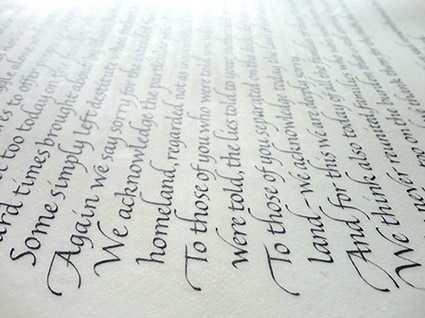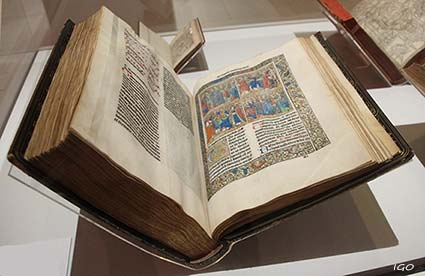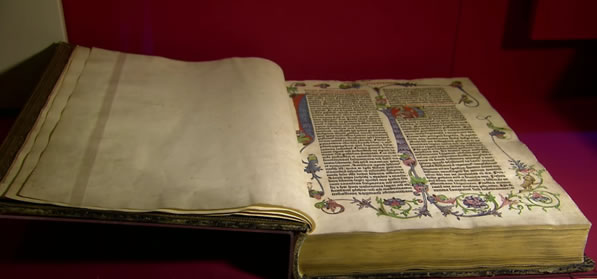Home > calligraphy
Art of writing
Calligraphy
Calligraphy is a Greek-sounding word that refers to the art of forming letters. Writing has given rise to many typefaces. The first calligraphers of the medieval manuscripts had balanced, regularly spaced writing. They wanted, however, to improve the readability of the connection between words. Reading has been made easier by the appearance of illuminated letters. Emphasis and punctuation appeared later in the 15th century.
There were many styles of writing, such as Gothic writing, which had been declined into different versions over time. Primitive Gothic first appeared in Northern France, then expanded to England and later to Germany. It was preceded by the Caroline writing, desired by Charlemagne. Some scriptures were developed by the monks of the Corbie Abbey, near Amiens.
The tools of the past were made of goose feathers in such a way to be able to form letters, whose line width was variable, or a reed whose tip was sharpened, also called calamus in Latin. The ink was handcrafted.
Calligraphy requires great precision to obtain regular writing and beautiful harmony, and everything must be perfectly distributed over the available surface. Calligraphy is an art mastered in Australia by Mrs. Gemma Black, the calligraphic designer

A calligraphic text by Mrs. Gemma Black, calligraphic designer, www.gemmablack.com
Illuminator
The profession of illuminator is uncommon, with only one French school located in the Pays de Loire region. The training aims to teach layout, calligraphy, drawing, coloring, gilding, medieval painting, and the study of several writing fonts. Calligraphy is a core discipline of this trade.
This knowledge was formerly spread throughout the world from East to West. The first illuminations were made for the «Codex» manuscript. The copyist monks copied the sacred texts. The price of these books was high due to the number of hours required to produce them as well as the equally valuable pigments, even the vellum paper. Some scrolls and playing cards were coated with illuminations.
Illuminators use inks, pigments, binders (egg yolks, honey, acacia gum), sometimes gold or silver, parchment, and vellum (thin skin).

Master bookbinder
The work of a bookbinder is an ancient craft for some and the most precious for others. Anyway, the restoration of valuable books is priceless. The cover of the first books was as expensive to make as the content because it was adorned with several stones.
The sheets are assembled by grouping several slips together or with a round back. The cover can be made of cardboard, leather, or canvas.
The embossing and the gilding on the edge stages are carried out using a binding press. The bookbinder must master different techniques, ranging from the laying of gold leaves to the application of various types of leather or the use of pigments.

This wooden part allows us to maintain the twines to link the various booklets.
Typography
The invention of typography made the book accessible to as many people as possible. Gutenberg, the son of a German goldsmith, coordinated existing techniques to create the first typographic characters.
The molds used by his father to cast the parts, as well as the punches, were the basis of his research for more than ten years. After the development of the first matrix containing a letter, it had to be reproduced several times before making the first page because this one contained the same letter several times. The press had required some calibrations to be operational.
From the 15th century, printing works developed rapidly to meet demand, as did the profession of the typographer. Gutenberg was surrounded in his quest by Peter Schoeffer, a calligrapher trained in Germany and then at the Sorbonne in Paris, as well as the banker Johan Fust from Mainz.
Several Gutenberg Bibles are exhibited around the world, such as at the Gutenberg Museum in Mainz, the New York Public Library, the British Library in London, and the Condé Museum in Chantilly.

Gutenberg’s Bible in the Treasure Room of the British Library in London.
